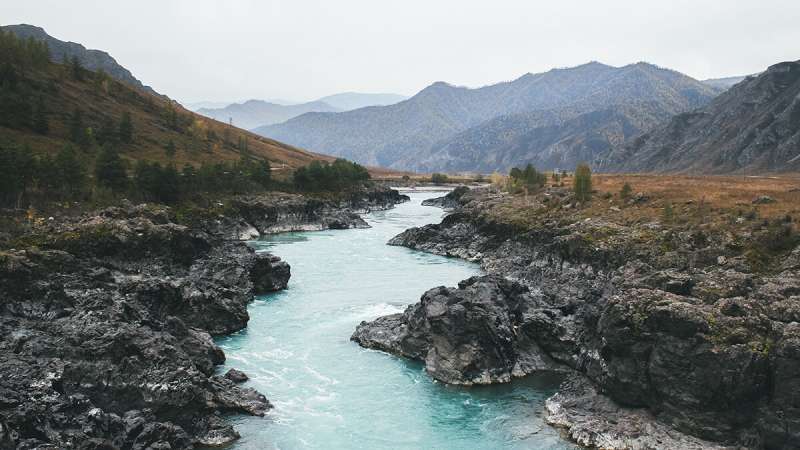High mountain rain has scientists rethinking river basics

Mountainous terrains have dynamic climates and can produce startling contrasts in precipitation. Increases in elevation can spell either more or less rainfall depending on atmospheric moisture content, general circulation patterns, and the specifics of the topography in question. But regardless of the directionality of the rainfall's gradient, such variability in precipitation can have large impacts on how rivers form, evolve, and shape the surrounding landscape. Although important, these influences on mountain landscape evolution are understudied.
In a new study, Leonard and Whipple model how variable precipitation in mountain landscape climates can create a complex system of changing river conditions that challenge many of the existing theories of how topography evolves over time. Previous works have analyzed how changes in rainfall influence topography, but most studies have focused on situations in which rainfall increases or decreases consistently across an area. The new study focuses on what happens when precipitation increases in a gradient-wise fashion along a river—raining more either upstream or downstream. Because many such changes in rainfall are expected to occur under climate change, the authors' study also seeks to address how past work may have misinterpreted the eventual topographical effects in regions, such as mountains, that are expected to experience uneven changes in rainfall.
Using the stream power model, the authors show that when precipitation gradients are considered, the model can produce some seemingly counterintuitive results. For example, when precipitation increases across a region, erosion is expected to increase in step, creating an overall flatter landscape. However, in some cases, when precipitation increases along a gradient, relief actually increases.
Including these changing rainfall patterns produces river dynamics that are considerably more variable: Rivers evolve through transient states that look different depending on when and where they're observed and depending on a host of other variables. In addition to the upstream/downstream orientation of the gradient, the scientists also show that spatially varying rainfall has different effects on tributaries versus trunk rivers and that the specifics of the topography are important. The increase in complexity paints an overall picture suggesting that river catchments have unique histories and relationships with changing rainfall conditions, making it difficult to generalize about how climate changes in the future will affect the topography of the planet over the long term.
More information: Joel S. Leonard et al, Influence of Spatial Rainfall Gradients on River Longitudinal Profiles and the Topographic Expression of Spatially and Temporally Variable Climates in Mountain Landscapes, Journal of Geophysical Research: Earth Surface (2021). DOI: 10.1029/2021JF006183
Provided by Eos




















